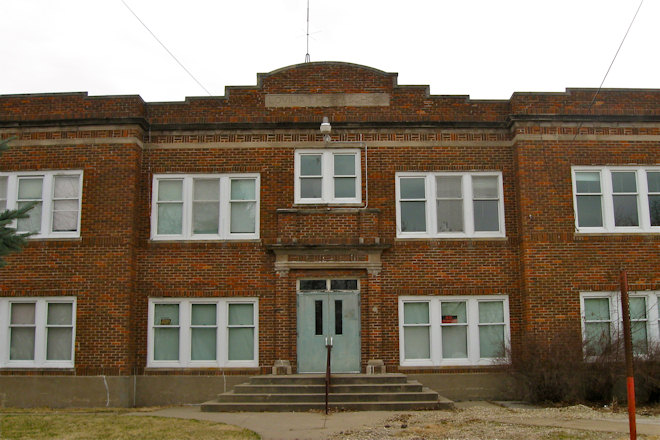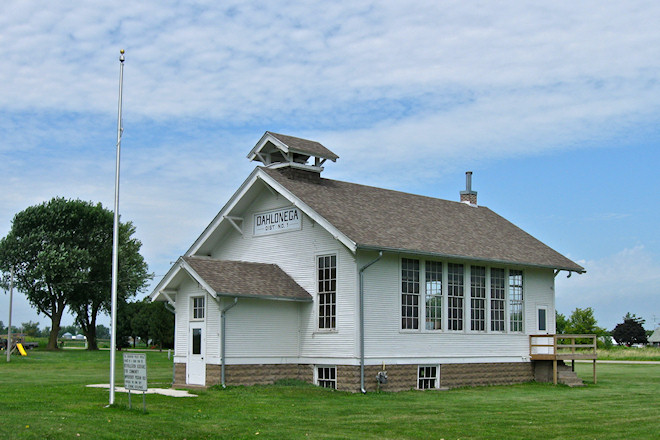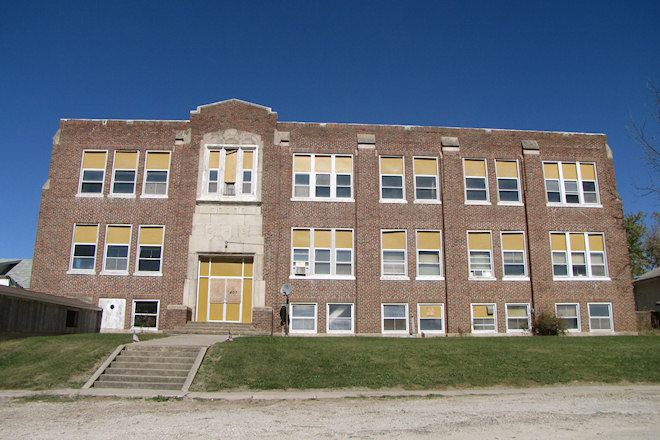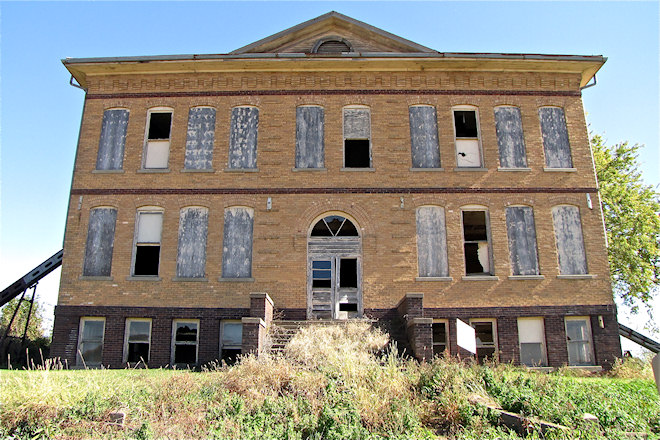
By the end of 1919, school attendance in the Monroe County town of Lovilia had grown to the point classes were held in five different buildings labeled as “fire traps and unsanitary” by the Lovilla Press. Residents rallied around the issue and overwhelmingly passed a $42,000 bond issue to begin construction on a new school. Featuring modern brick and a full basement, the two-story, 60 x 90 feet building was completed in the fall of 1920.
In 1956, the Lovilia School District had 305 students, including many from students in Marysville and Hamilton, communities in adjacent Marion County. When the Marion county school board mandated students attended schools within their own county, Lovilia’s enrollment declined and plans were developed to consolidate schools in Melrose, Lovilia and Albia to a single district. Despite meetings and protests, reorganization went into effect with the last Lovilia High School class graduating in 1962.
Despite assurances that eight grades would remain in Lovilia, by 1977 only students through fourth grade remained in Lovilia. The school was shuttered entirely shortly after, with all students bussed to Albia. The school building today is privately owned.



